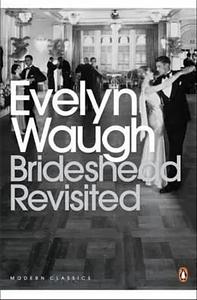Take a photo of a barcode or cover
dark
reflective
reflective
slow-paced
Plot or Character Driven:
Character
Strong character development:
Complicated
Loveable characters:
No
Diverse cast of characters:
No
Flaws of characters a main focus:
No
emotional
reflective
relaxing
slow-paced
Plot or Character Driven:
Character
Strong character development:
Complicated
Loveable characters:
Complicated
Diverse cast of characters:
No
emotional
funny
reflective
slow-paced
Plot or Character Driven:
Character
Strong character development:
Yes
Loveable characters:
Complicated
Diverse cast of characters:
Yes
Flaws of characters a main focus:
Yes
mysterious
reflective
medium-paced
Plot or Character Driven:
Character
Strong character development:
No
Loveable characters:
No
Diverse cast of characters:
Yes
Flaws of characters a main focus:
Yes
Dull; would have benefited from plot twists like Saltburn.
slow-paced
challenging
emotional
reflective
medium-paced
Plot or Character Driven:
A mix
Strong character development:
Yes
Loveable characters:
Complicated
Flaws of characters a main focus:
No
slow-paced
Plot or Character Driven:
Character
Strong character development:
No
Loveable characters:
No
Diverse cast of characters:
No
Flaws of characters a main focus:
Yes
out of touch rich people get drunk and nothing particularly compelling happens
Even at the time of writing in 1944 this was a picture of an age that had passed, as is confirmed by the narrator, Charles Ryder, from his standpoint as a 39 year old Captain in the army:
“My theme is memory, that winged host that soared about me one grey morning of wartime.”
A chance relocation of his unit to Brideshead, the ancestral home of the Marquis of Marchmain, brings back the memories of his student days at Oxford and his absorption with Sebastian Flyte, the second son of the Marquis, leading to a long entanglement with the family. Sebastian succumbs to alcoholism and escapes to Morocco, but not before Charles has spent long holidays at Brideshead and started on the architectural painting which becomes his livelihood. The family is dominated by the very religious (Catholic) mother, who has already antagonized her husband the Marquis, living, until he returns to Brideshead to die, in Venice with his mistress. Julia, the elder daughter, evades her mother through marriage to an American businessman, but that marriage is also unhappy and Charles, whose own marriage is in trouble as well, fall in love with Julia. But even when she says she wants to marry him, Julia is haunted by having sinned in the eyes of the Catholic church by marrying her first husband, a divorced man:
“Mummy carrying my sin with her to church, bowed under it and the black lace veil, in the chapel; slipping out with it in London before the fires were lit; taking it with her through the empty streets, where the milkman’s ponies stood with their forefeet on the pavement; mummy dying with my sin eating at her, more cruelly than her own deadly illness.”
The guilt is too much for her and the relationship ends at the deathbed of the Marquis.
This brief synopsis does no justice to the depth of character development over the whole novel and the looming threat of the Catholicism of the Flytes which pervades the activities of the family like a malignant spirit. It is a reflection on another age but some of the mental turbulence resulting from the conflicts between dominant and weaker characters remains eerily relevant.
“My theme is memory, that winged host that soared about me one grey morning of wartime.”
A chance relocation of his unit to Brideshead, the ancestral home of the Marquis of Marchmain, brings back the memories of his student days at Oxford and his absorption with Sebastian Flyte, the second son of the Marquis, leading to a long entanglement with the family. Sebastian succumbs to alcoholism and escapes to Morocco, but not before Charles has spent long holidays at Brideshead and started on the architectural painting which becomes his livelihood. The family is dominated by the very religious (Catholic) mother, who has already antagonized her husband the Marquis, living, until he returns to Brideshead to die, in Venice with his mistress. Julia, the elder daughter, evades her mother through marriage to an American businessman, but that marriage is also unhappy and Charles, whose own marriage is in trouble as well, fall in love with Julia. But even when she says she wants to marry him, Julia is haunted by having sinned in the eyes of the Catholic church by marrying her first husband, a divorced man:
“Mummy carrying my sin with her to church, bowed under it and the black lace veil, in the chapel; slipping out with it in London before the fires were lit; taking it with her through the empty streets, where the milkman’s ponies stood with their forefeet on the pavement; mummy dying with my sin eating at her, more cruelly than her own deadly illness.”
The guilt is too much for her and the relationship ends at the deathbed of the Marquis.
This brief synopsis does no justice to the depth of character development over the whole novel and the looming threat of the Catholicism of the Flytes which pervades the activities of the family like a malignant spirit. It is a reflection on another age but some of the mental turbulence resulting from the conflicts between dominant and weaker characters remains eerily relevant.
Wonderful, wonderful evocation of upper class Catholic English life between the wars.





